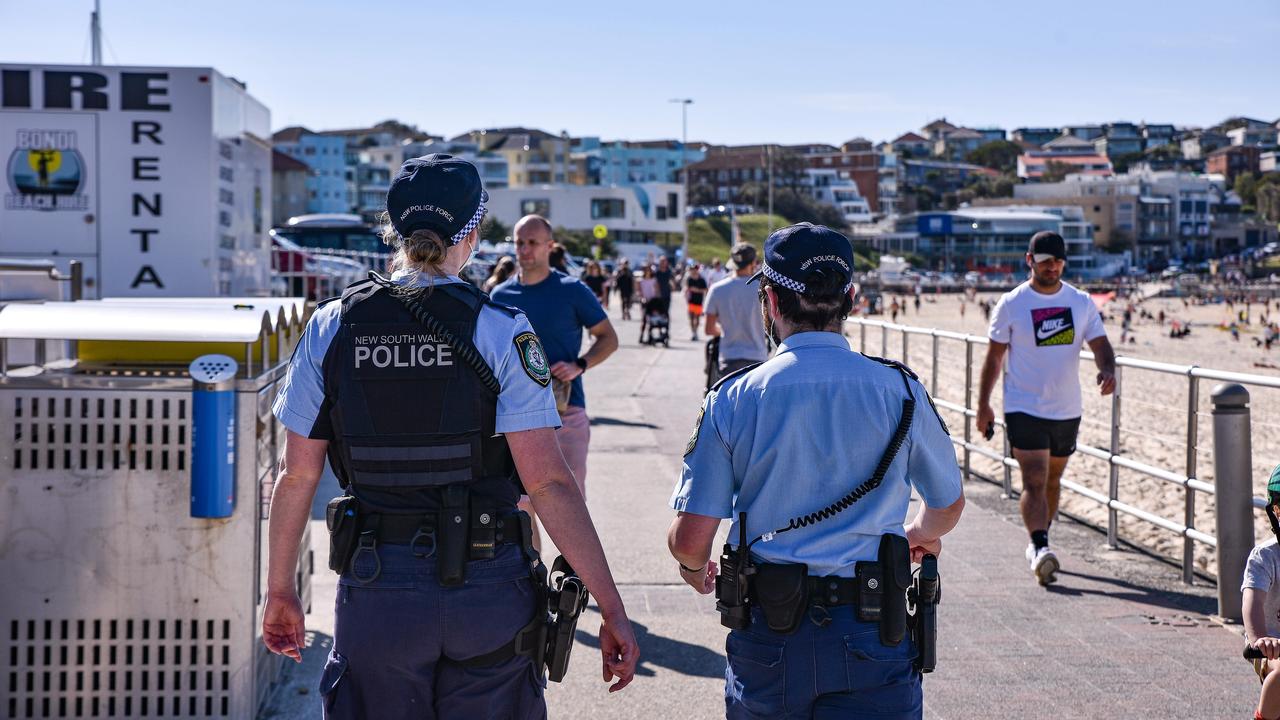Heatwave: AEMO hits go on emergency energy supply measures as Victoria swelters
As extreme heat leaves 160,000 Victorian homes without power, the Morrison government has come under attack over the blackouts.
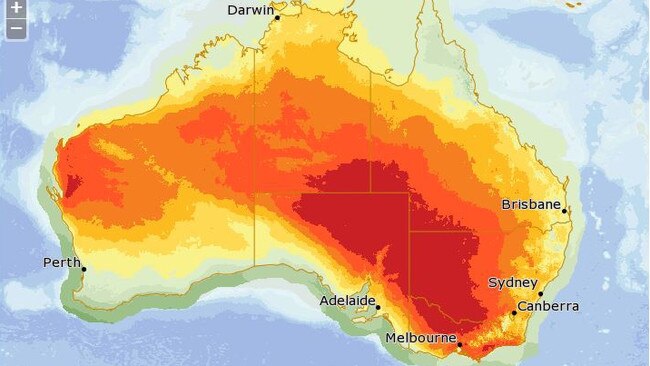
The Australian Energy Market Operator ordered load shedding to commence in Victoria today, as extreme heat put pressure on the state’s electricity network.
The last-resort move was aimed at freeing up 200 megawatts of power, subjecting 100,000 Victorians to rolling power outages.
AEMO confirmed the scheduled supply disruptions or “rotating brownouts” began at midday.
Meanwhile, bushfires are devastating large parts of Tasmania have forced evacuations, and there are emergency warnings in Victoria.
7.40pm: Dangerous Vic fire creates lightning cloud
Smoke from a “dangerous” bushfire in Victoria’s East Gippsland region has sparked lightning and a call for nearby residents to evacuate. The blaze is burning out of control north of Timbarra on and has created a lightning cloud.
Burning since January 16 and started by lightning, Friday’s sweltering conditions saw the fire surge.
The blaze grew from 400 hectares to 3000 hectares, Emergency Management Commissioner Andrew Crisp said.
“It’s a dangerous fire.” Rough terrain and conditions made it difficult for firefighters to battle, he added.
“At its peak we had 125 firefighters engaged in asset protection and nine helicopters and planes.” Most people are believed to have left before an emergency warning was issued and three people had presented at a relief centre.
Bureau of Meteorology forecaster Kevin Parkin explained the hazard of the conditions.
“We saw the smoke column jump from only being a couple of kilometres high to 10km or more high, and we saw that smoke columnproduce its own lightning,” he said.
The phenomenon is called pyrocumulus and is “incredibly dangerous,” he added. “It can make it almost impossible to fight.” People at Butchers Ridge, W-Tree, Murrindal and Gillingall are being told to leave immediately.
“The bushfire is travelling in a south-easterly direction towards Timbarra Settlement. This fire is threatening homes and lives,” an emergency alert reads.
7.15pm Weekend relief for Melbourne
Melbourne is expecting milder temperatures across the weekend, with a forecast maximum of 25C, while northwest parts of Victoriaalso in line for some reprieve.
Airconditioners and fans offered no relief for more than 200,000 Victorian energy customers who had their power cut and were left to swelter through extreme temperatures on Friday.
The heat peaked at 42.8C in Melbourne, with planned power cuts known as “brownouts” imposed by the Australian EnergyMarket Operator. The cuts lasted for up to two hours in some areas but were deemed necessary because two generators at Yallournand one at Loy Yang failed to cope with the extreme heat.
By midafternoon, the temperature had dropped by 15C in 30 minutes and the AEMO confirmed the cuts had ended.
- AAP
6.55pm: Hundreds of Tasmanians flee
Hundreds of Tasmanians have fled their homes as bushfiresfuelled by heat and strong wind gusts threaten numerous communities across the state. Fifty-six blazes burned on the islandon Friday, with many uncontrolled and nine sparking emergency warnings.
Most of those were in remote parts of central Tasmania, while others posed a threat to the communities of Geeveston, southwestof Hobart, and the western centre of Zeehan.
As temperatures in the state capital peaked at 40.1C, authorities urged people nearby the blazes to be wary of embers travellingmore than 10km and to leave early rather than be caught too late.
An evacuation centre at Huonville, south of Hobart, had 49 overnight guests and numbers had ballooned to some 150 people bymid-afternoon Friday. “We have briefings which are obviously important for those people who want to know what is happeningwith the fire,” Huon Valley Mayor Bec Enders told ABC TV. “We have social workers talking to people as well, for those thatare feeling a bit perhaps isolated from the situation.” Ms Enders said many of the rural families have spent generations on the land impacted by the fires.
“But one thing is that they are a really resilient community. “This centre has capacity for 300 people “We have opened upour showgrounds to livestock. Lots of people have horses in this area as well as pet goats, etc, so we have been taking thoseanimals over at the showground.” Another evacuation centre is operating at Queenstown, welcoming people fleeing the fire threatening Zeehan.
- AAP
Perry Williams 5.30pm: Victorians thanked for their patience
Power cuts to more than 200,000 Victorian households this afternoon have concluded with the electricity grid now operating with sufficient reserves.
The interruptions and emergency resources gathered from standby generators were needed to protect the power system during record-breaking temperatures, high demand and reduced generation availability.
More than 250 megawatts was required to be cut during the peak demand period, equating to between 60,000 and 100,000 consumers without power.
The Australian Energy Market Operator issued a direction for networks to begin the restoration of all lost load at 3pm local time. AEMO said it does not envisage any further power supply interruptions this evening, over the weekend or into next week, with sufficient reserves forecast across the National Electricity Market.
“AEMO acknowledges the inconvenience and hardship of losing power supply during extreme conditions, and thanks all Victorians for their patience. AEMO would also like to recognise the contribution made by Victorian consumers and businesses who have purposefully conserved their energy use over the past 48 hours,” AEMO said in a statement.
“AEMO notes there may be Victorian residents and businesses who remain without power due to unrelated faults on the network. We encourage consumers to monitor their local distribution network’s outage maps via mobile devices or online.”
Matthew Denholm 5.25pm: Properties destroyed as 30 Tassie fires rage
Tasmanians face an ongoing bushfire emergency, despite the threat to major towns appearing to have eased, with strong winds and high temperatures continuing into tonight.
Fire authorities this afternoon warned people near any of the 30 serious blazes around the state against complacency, but signalled that the threat to Geeveston in the Huon Valley and Zeehan in the west was now not as severe as earlier feared.
Very high to severe fire conditions, including temperatures exceeding 40 in parts of Hobart, as well as gusty winds, have seen all three of the most concerning bushfires further escape containment today.
While conditions were expected to gradually ease tonight, firefighters still face a combined fire edge “well in excess of 1,000 km”, with 71,000 ha of bush burnt, and are likely to be battling dozens of fires for days, if not weeks.
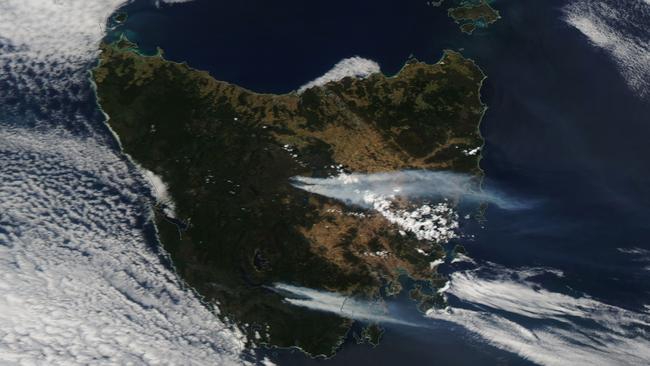
The Tasmania Fire Service confirmed it earlier today pulled crews out of several locations on the Central Plateau when conditions became unsafe, and were yet to return to assess any damage.
As of this afternoon, at least three properties – a shack, a shed and a fishing hut - had been destroyed.
Andrew McGuinness, of the TFS, said there were so far no reports of fatalities.
“We’ve received no information and no intelligence to suggest there’s been any fatalities, and no intelligence at this stage that there’s been any injuries,” he said.
There were concerns Geeveston, a tourist and forestry town south of Hobart, could be impacted by a fire that started in nearby Tahune, but these appeared to have eased.
It now also appeared “unlikely” that Zeehan, on the West Coast, would be impacted by a fire on its outskirts, but in all cases Mr McGuinness warned residents to “remain vigilant and alert”. “Things can change quickly,” he said.
In particular, he warned wind changes associated with a cooler change due tonight could still threaten Geeveston, as well as Central Plateau communities near Waddamana and Shannon.
“Even though the conditions are going to cool … the fuel out there is very dry, there are quite heavy fuel loads … and that’s going to support fire travel for the foreseeable future, until we get at least substantial rain,” Mr McGuinness said.
Hundreds of people have heeded the official advice and left areas covered by emergency warnings, with evacuation centres set up in Huonville, north of Geeveston, as well as Poatina, Bothwell and Hamilton, in the Central Highlands, and Queenstown on the West Coast.
.@TasFireService: We’ve hit severe fire conditions today. We know that puts people’s lives at risk. It’s on the cusp of us not being able to contain fires. At the moment we’ve got three structure losses.
— Sky News Australia (@SkyNewsAust) January 25, 2019
MORE: https://t.co/ykweMevBOK #newsday pic.twitter.com/YJ2WTH8pyu
Geeveston resident Kevin Eggerling, wife Joanna and dog Shiloh evacuated on Thursday night. After seven years living in the town, he had never seen fire conditions as concerning.
“We just followed the advice to leave and we didn’t want to leave in the dark,” he said. “I’ve never seen conditions like this. It’s so smoky and so windy.”
Joanna had been taken to the Royal Hobart Hospital after falling ill with stomach problems. “The stress of the evacuation may have helped it along but she’s doing fine,” he said.
Hundreds of firefighters, including contingents from interstate and New Zealand, have been engaged in fighting the fires, some of which began weeks ago. Mr McGuinness said it was likely the assistance of the visitors would be needed for some time.
Premier Will Hodgman thanked the firefighters, announced the federal government had promised emergency funding and promised to review TFS resourcing after the situation had stabilised.
Rachel Baxendale 4.47pm: We’re watching closely: Taylor
Federal energy minister Angus Taylor said the government was closely monitoring the energy situation in Victoria and understood the frustration of many families and businesses.
“Action taken by the Australian Energy Market Operator has been targeted to maintain electricity supply and support the grid as Victoria deals with extreme weather conditions, high demand and reduced supply,” Mr Taylor said.
“The Australian government thanks AEMO for the job it has done managing a difficult situation in collaboration with the wider energy industry.
“The conditions experienced over the last two weeks across the national electricity market reinforce the need for investment in reliable 24/7 generation and the retailer reliability obligation.
“That is why the government is backing in new reliable generation investment through its Underwriting New Generation Investments program which has had strong responses to its registration of interest process that closed on 23 January.
“The government will carefully consider all proposals and will have more to say once we have considered all the submissions and feedback received during this process.”
Rachel Baxendale: 4.40pm: Shorten sheets blame home to PM
Labor leader Bill Shorten said he was very concerned about the load shedding, suggesting the Morrison government was partly to blame.
“Ever since the federal government said they could lower power prices and took responsibility for the power debate, it’s now partly on the federal government’s head this challenge of blackouts,” Mr Shorten said.
“They’re the ones who said that renewables were a waste of time - well they’ve been in charge now for the best part of six years.
“I do expect the federal government, having said they could lower prices, to do more for the reliability of the system rather than just blame the states but it is most serious and let’s just keep our fingers crossed.”
Mr Shorten said the last six years of energy policy had been a disgrace.
“While this government has been debating the scientists and the community about renewable energy there has been a virtual freeze on investment in power generation and now sadly when we need our power the chickens have come home to roost,” he said.
“While you have a government that can’t deliver a coherent national power policy, there will not be investment in new generation and where you don’t have investment in new generation, sooner or later the old generation will fall over and then we face these sorts of crises.
“To me it highlights everything that’s wrong with the LNP and the Liberal government in Canberra in 2019 - they spend so much time arguing about the politics, and now we’ve wasted 2000 days and we’re no better off, indeed we’re worse off, than we were six years ago.”
.@LilyDAmbrosioMP on Victoria's blackouts: Any loss of power, however brief, is a worry. People should be rightly disappointed that the power grid was not up to the task today.
— Sky News Australia (@SkyNewsAust) January 25, 2019
MORE: https://t.co/AYP98K1CWA #newsday pic.twitter.com/wXm1HyYFBn
Rachel Baxendale 4.35pm: DiNatale a political ‘dilettante’
Ms D’Ambrosio described Richard Di Natale as a “dilettante” who “waltzes in and out when it suits him to grab a political line” after the federal Greens leader blamed an over-reliance on coal for the Tasmanian bushfires.
“The fact is, Victorians were in the middle of one of the most extraordinary heatwave events that we’ve seen in many, many years,” she said.
The energy minister said there was typically no compensation for customers inconvenienced by load shedding.
“What I would do is encourage those members of the community who feel that they’ve not been able to tolerate being off for an hour - and most people, if they were off, they were off for no more than an hour, although in some areas it was up to two hours - that they make contact with relevant authorities,” Ms D’Ambrosio said.
“But I think what’s important here is that the market operator made a decision to spread the load-shedding to minimise, as much as possible, the disturbance to Victorians, so that means limiting to one hour, rolling it to the next - to another town or area - and that’s meant that there’s been minimal disruption and discomfort to many Victorians as a result.”
Rachel Baxendale 4.28pm: Minister blames federal policy vacuum
Asked about the Victorian opposition’s description of today’s power outages as “Third World”, Ms D’Ambrosio said voters had spoken loudly and clearly on the Coalition’s credibility on energy policy at the November election.
“They had no energy policy. The only energy policy they took to the last state election was to build a new coal-fired power station which - even if you started building it today - would take eight years to come,” Ms D’Ambrosio said.
“No-one is prepared to finance it, and we can see that the problems we’ve got now is that we’ve got a 20th Century system for a 21st Century climate, and the fact is our thermal generators are ageing, they are becoming less and less reliable.
“That has been palpably evident in the last couple days.”
Ms D’Ambrosio talked up the Andrews government’s renewable energy target.
“More energy supply is available to us in Victoria this summer than it was this time last year. That’s because of our strong emphasis on renewable energy: the quickest form of energy to be built, the cheapest and, of course, if we have a look at today, the most reliable.
“Wind power came through today. Wind power produced sufficient power generation - as was anticipated.
“Our batteries - our large batteries - were available last night when we needed them the most.”
AEMO data showed the batteries generating just 25 megawatts of a Victorian total of 8,622 megawatts at 7pm last night.
Wind is currently generating 8.1 per cent of Victoria’s energy.
Rachel Baxendale 4.20pm: ‘An extraordinary figure to lose power’
Victorian energy minister Lily D’Ambrosio said extreme heat had caused demand for power to increase to unanticipated levels.
“It meant a reduction in power output from the existing thermal generators that are still in our system,” Ms D’Ambrosio said.
“That came on top of the fact that we’d lost three units of power generation from our coal generators in the Latrobe Valley overnight and into this morning.
“So with those changing set of circumstances, that changed very, very quickly, the market operator did what the market operator’s job is, and that was it decided that there was an actual gap in energy supply to meet that continuously rising demand for energy.”
Ms D’Ambrosio said the gap between supply and demand had been 250 megawatts, in a context where Victoria was 1,800 megawatts down in terms of normal power generation capacity.
“That is an extraordinary figure to lose power in Victoria, 1,800 megawatts, and essentially, most of that was as a result of failed infrastructure from our coal and gas units - in particular, coal and, of course, a decrease in the output of power from those generators that were able to remain in our system,” she said.
Ms D’Ambrosio said the load shedding had been necessary to make up the 250 megawatt shortfall.
“The market operator, some time ago - a short time ago - directed the distribution network businesses to commence restoring that power, that 250 megawatts,” she said.
“We are at the point now where most Victorians are now back on full supply.
“There are, of course, outstanding matters where there may be outages that are related to faults of network systems that are not supply-related, but they are being dealt with in the usual way.”
Ms D’Ambrosio said there had been around 150,000 Victorians who had lost power supply at particular points in time.
The Australian understands the outages peaked at 161,848 customers.
“I do want to thank all Victorians for their patience and understanding throughout this time. It has been an extraordinary heat event over the last few days,” Ms D’Ambrosio said.
“People should be rightly disappointed that the power grid was not up to the task today, but certainly there will be time for us to reflect on the occurrences of today.
.@LilyDAmbrosioMP: We lost, in terms of power generation, 1,800 megawatts of power capacity in Victoria. Most of that was as a result of failed infrastructure from our coal and gas units.
— Sky News Australia (@SkyNewsAust) January 25, 2019
MORE: https://t.co/AYP98K1CWA #newsday pic.twitter.com/Onpg0K2Nw8
Rachel Baxendale 4pm: 160,000 without power
More than 160,000 Victorian households and businesses were left without power at the height of the load shedding.
At 2:30pm, 161,848 consumers were without power.
This included 85,750 Powercor consumers, 23,468 from Ausnet, 32,093 from United Energy, and 20,537 from Jemena.
The majority of those customers have since had their power switched back on.
At 4pm, 1615 Citipower customers and 9954 Powercor customers remained without power.
Debbie Schipp 3.30pm: NSW next to sweat
Now, the heat is marching north.
The furnace that’s been plaguing Adelaide and Melbourne is heading Sydney’s way, but things are going to be a lot stickier in NSW, AAP reports.
Heatwave conditions are expected to peak on Australia Day, with parts of the Sydney’s west forecast to reach 43C and a more bearable 34C in the CBD. Areas in the state’s west were already sizzling today, with Hay, Swan Hill, Ivanhoe and White Cliffs all surpassing 46C by lunchtime.
Perry Williams 3.25pm: ‘Power failures follow policy failures’
Poor government policy and its distorting impact on investment is as much to blame for the country’s fragile power grid as heatwaves or technical issues, the Energy Policy Institute of Australia says.
“Power failures surely follow policy failures. The Australian federal and state governments are collectively to blame for the present failings of the power system,” the institute’s executive director Robert Pritchard said.
“The present power cuts are not really caused by heatwaves or technical issues — they can be traced back to over a decade of policy failures that have distorted investment patterns. And there will be more power cuts coming for as long as the policy failures remain unaddressed,” Mr Pritchard said.
There's still a large number of traffic lights, overhead signage and message signs without power around the state. We're seeing areas affected from the Bellarine Peninsula to Bulleen and in-between. Take care, and follow the same rules as an un-signalled intersection. #victraffic https://t.co/VlUS7iBPfO
— VicTraffic (@VicTraffic) January 25, 2019
Debbie Schipp 3pm: Temp drops 12C in 7 minutes
The cool change which brought blessed relief to parts of Victoria saw temperatures in Melbourne drop 12C in just seven minutes — a stark contrast to the city’s top of 42C earlier.
Now thunderstorms are developing on the back of the gusty change.
Melbourne CBD reached 42.3C at 2pm, but had rapidly dropped to 30.8C by 2.09pm. Trains and trams were being speed limited across the city to allow for potential track warping in extreme heat.
More than 70 sets of traffic lights were out as the power cuts kicked in.
With the change bringing the risk of rain, thunderstorms and dusty erratic winds and there is also a risk of dry lightning, which could spark more fires.
Rachel Baxendale 2.55pm: ‘Something is seriously wrong’
Victorian opposition leader Michael O’Brien said the load shedding today in Victoria has shown the failure of the Andrews government’s energy policies.
“Something is seriously wrong when the power goes out in Victoria because we don’t have enough supply,” the Liberal leader said.
“On a day of extreme temperatures, there are serious health and safety concerns with deliberately cutting off supply.
“When Labor policy led to the closure of Hazelwood Power Station, the Liberals and Nationals warned that Victoria was left exposed.
“We are not a Third World country. We deserve a safe and reliable power grid.
“Daniel Andrews loves to boast he’s good at ‘getting things done’. Keeping the power on would be a good start.”
Daniel Wild, Director of Economics at free market think-tank the Institute of Public Affairs said the power outages in Victoria were further evidence that Australia must exit the Paris Climate Agreement “which is forcing unreliable and high cost wind energy generation into the power grid at the expense of reliable coal.”
“In the midst of the heatwave in Victoria, only around 6 per cent of total energy generation was being provided by wind energy generators despite the provisions of billions of dollars in subsidies,” Mr Wild said.
“State and commonwealth governments must end all taxpayer subsidies to wind and solar energy generation. They are high cost, unreliable, and have resulted in hundreds of thousands of Australians being left in darkness. “Renewable energy generation receives $5 billion in taxpayer subsidies per year yet cannot even provide 10 per cent of Australia’s energy needs.”
Rachel Baxendale 2.28pm: Cool change brings relief
The cool change has hit Melbourne, taking the temperature from 42.8C just after 1.30pm, down to 27.8C currently.
Updated #VicCoolChange forecast. It arrived in #Melbourne at 2:04pm & the temp has now dropped to just 26.9°C! Thunderstorms are starting to develop in the spotty convective cloud near and east of the change. https://t.co/R7A74b1hnV #VicWeather #MelbWeather pic.twitter.com/7oTzxyS2PA
— Bureau of Meteorology, Victoria (@BOM_Vic) January 25, 2019
Rachel Baxendale 2.22pm: 100,000 now hit
We’re now up to almost 100,000 outages, with 28412 Citipower customers and 69834 Powercor customers switched off.
Rachel Baxendale 2.02pm: Outages widen
According to CitiPower and Powercor, 73,725 households and businesses are currently subject to outages across Victoria.
This includes 28,047 CitiPower customers and 45,678 Powercor customers.
Rachel Baxendale 1.57pm: Bushfires threaten power security
Victorian Energy Minister Lily D’Ambrosio has warned that Victoria’s power security was under threat from bushfires near the interconnectors with NSW and Tasmania.
“We know that there are bushfires in southern NSW near the interconnector, the massive transition line between NSW and Victoria,” she said.
“Now if that bushfire gets out of control and impact that transmission line, then there are consequences in terms of supply.
“Similarly in Tasmania, Tasmania is suffering bushfires in the north and south today. We have the Basslink interconnector which has power, that enables power to go backwards and forwards between Tasmania, Victoria and into the other states.
“Now again, if bushfires get too close to that Basslink interconnection, either on our side of the fence of Bass Strait or on the Tasmanian side, that can have significant consequences in terms of our supply.”
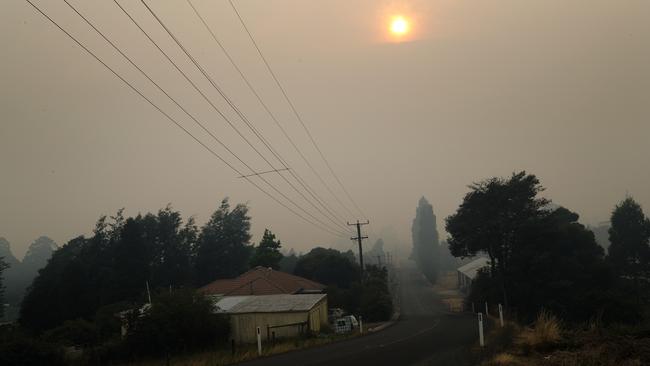
Matthew Denholm 1.50pm: Tas bushfire emergency worsens
Tasmanian firefighting efforts are at risk of being overwhelmed by the scale of the state’s bushfire emergency, with three major blazes threatening communities in the south, west and central plateau.
At least one property has been destroyed today, adding to one lost on Thursday, and its feared others will be lost on the central plateau, where fire crews have been forced to withdraw due to the advancing firefront.
Residents have fled the three main fires, threatening communities including Castle Forbes Bay, Geeveston, Port Huon, Cairns Bay And Waterloo, in the Huon Valley; Zeehan and Renison Bell tin mine in the west, and; Waddamana, Hilltop, Penstock Lagoon, Bronte Park area, Pine Tier Lagoon, London Lakes, Bradys Lake, Shannon and Lake Echo area on the Central Plateau.
Evacuation centres have been set up in all three regions as people heed the advice of authorities and so far no injuries or fatalities have been reported.
On the central plateau, the mammoth Great Pine Tier blaze, has burned more than 20,000 ha and destroyed two properties.
There are more than 50 bushfires statewide, of which about 30 are regarded as “active”, creating a total combined fire edge of more than 800km.
High northerly and north westerly winds may hamper the use of firebombing aircraft this afternoon, while temperatures have reached the high 30s. Dry lightning, which started many of the fires, is forecast as a possibility this afternoon and conditions are not expected to substantially ease until evening.
Premier Will Hodgman and fire chiefs will give an update shortly.
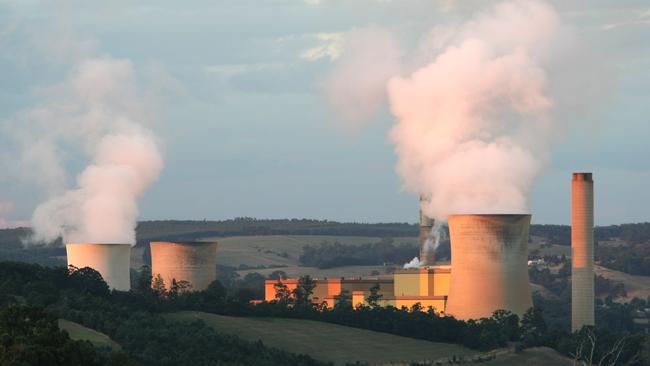
Rachel Baxendale 1.47pm: Blame game begins
Victorian opposition acting energy spokesman David Southwick said it defied belief that in a first-world country like Australia, Victoria has a state government that can’t guarantee enough electricity for people to go about their daily lives.
“Melbourne is currently hosting thousands of international tourists for the Australian Open who must be wondering why the state government is asking its citizens to refrain from using common household appliances to prevent large scale blackouts,” Mr Southwick said.
“Most Victorians agree that renewable energy is the future but we need to make it a sensible transition that doesn’t threaten power supplies and cost Victorians a fortune.
“Daniel Andrews owes all Victorians an explanation as to why he can’t keep the lights on.”
Meanwhile Victorian Energy Minister Lily D’Ambrosio talked up the Andrews government’s investment in renewable energy.
“I think what’s important is that you’ve got a government here in Victoria that’s got a plan about transitioning out to a new energy system so that Victorians can remain confident that they will continue to have reliable power when they need it, and that means of course as a government we have very ambitious renewable energy targets,” she said.
“Right now we’ve got more than 4000 megawatts of new renewable energy projects that have either been built or are being built — 4000 megawatts is a significant amount of additional power when you consider that the demand today of Victorians is around 9,600.
“Furthermore, right now we are rolling out solar power on 700,000 homes right across the state. That’s going to provide a further 2000 megawatts of new supply over the next ten years.”
46 degrees in Melbourne. Power out, traffic lights stopped. Local Chinese place on fire. Two puppies overheating. 🥵🥵🥵🥵
— Hannah Gould (@hrhgould) January 25, 2019
1.34pm: Fire evacuation alert
An out-of-control fire raging through Victoria’s East Gippsland region has prompted an evacuation alert for some residents.
Northerly winds are fanning the fire 10km north of Timbarra, which has been burning since January 16. People at Butchers Ridge, W-Tree, Murrindal and Gillingall are being told to leave immediately. “This fire is threatening homes and lives,” the alert reads. More than 500 personnel are fighting the blaze, using 28 tankers, five helicopters and about 100 other vehicles and machines. Temperatures in the area have been soaring to 40C.
A total fire ban is in force statewide — AAP
Primrose Riordan 1.25pm: Coal is to blame: Di Natale
Richard Di Natale says those complaining about power outages should think about the “sacrifices made during war time” if they complained about not being able to use home appliances.
Rachel Baxendale 1.18pm: Portland smelter offline at 2pm
AEMO CEO Audrey Zibelman said the Alcoa smelter at Portland was also due to go offline at 2pm, freeing up approximately 270 megawatts initially, with a further 100 megawatts subsequently.
“As I said yesterday, the first thing we do is go into the reserves. Once we exhaust the reserves, we really have to go into load shed to protect the system,” Ms Zibelman said.
Asked whether Victoria was getting power from South Australia’s diesel generators, as occurred yesterday, Ms Zibelman said the South Australian generators were not being used today because of better wind power generation conditions in that state today.
Victoria no longer has back-up diesel generation after it was deemed unnecessary.
Ms Zibelman said South Australia’s diesel generators had powered both states yesterday.
“It was for both of them. We’re looking at reserve needs, so we share the reserves across the regions,” she said.
“Today, South Australia does not need reserves, and so what they’re doing is they have excess generation, and we’re able to take advantage of that in Victoria.
Rachel Baxendale 1.17pm: Load-shedding ‘common practice’
AEMO CEO Audrey Zibelman said she could not put a figure on the cost of paying manufacturers such as Alcoa to switch off their power in times of high demand.
Last year, it was reported that the practice had cost taxpayers $50 million.
“We’ll have to figure that out after the point, but the difference between last year and this year is, last year, when we did this program, we actually paid what was known as just a pre-activation amount, so we actually paid dollars just to make, generate resources available,” Ms Zibelman said.
“This year, under the schemes that we have, we only pay when we use them, so the total amount will be dependent on how many we use over many hours.”
She said approximately 10 companies had gone offline voluntarily yesterday to increase energy reserves, including Alcoa.
Ms Zibelman said load shedding was common practice around the world.
“All countries that I’m aware of, and again, I have been in the business for 30 years, and over periods of time you run into these systems like you have, where you have generators that go off and you have to do load shedding,” she said.
“We can’t afford … 100 per cent reliability over all hours and all circumstances, but we do like to plan that for what we see these extreme weather events that we have enough reserves available. That’s really what we’re working towards.”
Rachel Baxendale 1.15pm: Co-ordinated interruptions
“This initiative follows the activation of all available resources procured under the Reliability and Emergency Reserve Trader mechanism in Victoria,” the market operator said.
“Co-ordinated supply interruptions are required to maintain electricity supply and protect the power system as Victoria deals with record-breaking high temperatures, high demand and reduced generation availability.”
Rachel Baxendale 1.10pm: Affected suburbs
A long list of suburbs and localities across the state are affected, including parts of: Epping, Mill Park, Lysterfield, Rowville, Clyde, Cranbourne East; Southbank, Armadale, Toorak, Camberwell, Fairfield, Northcote, Caulfield, Elwood, Beaumaris, Bulleen, Burwood, Riversdale, Bentleigh, Heathdale, Balaclava, Malvern, Balwyn, Surrey Hills, Essendon, Essendon North, Strathmore, Glenroy, Oak Park, Kalkallo, Broadmeadows, West Footscray, Fairfield, Ivanhoe, Alphington, Airport West, East Keilor, Niddrie, Ascot Vale, and Moonee Pond, Camperdown, Weerite, Yarrawonga, Bundalong, Castlemaine Muckleford, Lara, Corio, Norlane, Herne Hill, Hamlyn Heights, Balmoral, Haven, Woolsthorpe, Grassmere and Mailers Flat.
Rachel Baxendale 1.08pm: Disruptions until 2.30pm
AEMO said it was expecting more favourable weather and supply-demand conditions midafternoon, with a cool change expected to hit Melbourne about 2.30pm, after which they do not expect to schedule further disruptions.
Earlier today, Victorians were urged to cut power use ahead of another day of record-breaking heat.
Adding to the tight supply situation was the loss of a second unit from EnergyAustralia’s Yallourn coal-fired power station overnight due to a tube leak.
Major generators including AGL’s Loy Yang A and Liddell plants are were running at less than full capacity due to faults, ratcheting up pressure on the nation’s fragile electricity system.
Some 40,000 homes lost power in Victoria and South Australia overnight due to the severe heat forcing street-level transmission infrastructure to shut down.
As a result of Victoria’s high temperatures, high demand and reduced generation availability, loss of electricity load to regions of the state has been required to ensure power system security. Please stay safe and we will provide a further update shortly. https://t.co/GRWFQRfyGR pic.twitter.com/U7oPwyK8Pz
— AEMO (@AEMO_Media) January 25, 2019
EnergyAustralia said it was forced to take the Yallourn unit in Victoria’s Latrobe Valley offline today despite the desperate need for power supplies.
“We took the decision to continue running unit three in a controlled and reduced capacity, to help provide some relief with the extreme weather and demand placed on the system. Our ability to safely operate this unit was essential yesterday and helped ensure Victorians
remained with power,” a spokesperson said.
“Following this peak period on Thursday, we were forced to take it offline because the condition of the tube leak deteriorated.”
Luke Griffiths 12.55pm: Adelaide’s power dramas
More than 250 homes were still without power in Adelaide’s western suburbs late this morning after transmission infrastructure buckled amid yesterday’s record heat.
The problem peaked around 9.30pm Thursday when the lights went out in about 25,000 homes after transformers failed and fuses blew in temperatures that remained close to 40C.
At 11.30am today, 265 homes in the Morphettville area, 10km southwest of the CBD, still did not have power. The problem was rectified just before midday.
The temperature yesterday peaked at 46.6C — Adelaide’s hottest day since records began 130 years ago and the highest temperature ever recorded in an Australian capital city, passing Melbourne’s 46.4C on Black Saturday, February 7, 2009.
Privately-owned SA Power Networks, the sole distributor of power across South Australia, apologised for the outages, but spokesman Paul Roberts said the problem could have been far worse.
“The fuses on the transformer did their job and they failed first to prevent a catastrophic failure of transformers,” he told ABC radio.
South Australian Energy Minister Dan van Holst Pellekaan said he understood the frustration of the consumers, but stressed the outages were not caused by “load shedding”.
He said SA’s heaviest industrial energy users — Whyalla steelworks owner GFG Alliance, Port Pirie lead smelter operator Nyrstar, and mining giant BHP — all reduced consumption to free up supply.
For the first time, South Australia’s emergency diesel generators — procured by the former Weatherill government in response to a statewide blackout in September 2016 — were switched on to help shore up supply in both South Australia and Victoria.
EARLIER:
Brownouts possible
This morning, Energy Minister Lily D’Ambrosio said power brownouts had not been ruled out but “blackouts are something that absolutely will not be a feature of today or a possibility” as she urged Victorians to ration their non-essential electricity use.
Record-breaking heat
As many woke bleary-eyed after a hot, sleepless night, some spots in northern Victoria are on track to break records, with Mildura and Kerang, whose hottest days reached 46.9 degrees, are both forecast for 47.
“Certainly a number of locations will be nudging records today,” Bureau of Meteorology senior forecaster Michael Efron told AAP.
A large part of central and northern Victoria and even Gippsland are expected to reach the mid 40s ahead of a gusty, south westerly change.
A bushfire emergency alert has been activated for Victoria’s east Gippsland region, where the temperature is reaching into the 40s.
The blaze is burning 10km north of Timbarra on Friday and is uncontrolled, Vic Emergency reports.
Residents are being told that leaving is the safest option, with the fire likely to worsen quickly under increasing winds.
The change will reach the southwest of the state later on Friday morning, then move to central areas in the afternoon.
Hotter than Black Saturday
Melbourne is set for a top of 44, which if reached will be the hottest day in 10 years, since Black Saturday, February 7, 2009.
By 12.30pm (AEDT) on Friday, Melbourne was already 41.5 degrees and the mercury at Melbourne Airport had already spiked to 42.6 degrees.
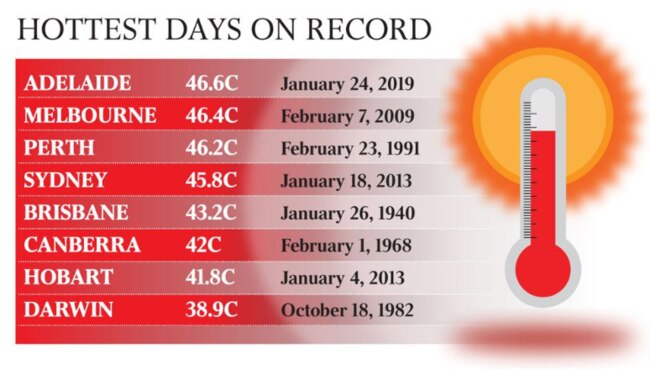
“Melbourne is one of the hotter places at the state at the moment,” Mr Efron said.
“I think we will hit the 40 degree mark late morning or midday in the Melbourne area with that temperature peaking just before the change arrives.
“Between about 2.30 or 3pm, we’ll see that maximum of 44 but then a significant decrease in temperature into the late afternoon, with that squally south westerly change.”
The change is forecast mainly for the central and eastern districts and brings risk of rain and thunderstorms.
There is also a risk of dry lightning, which could spark more fires. The change is expected to reach other parts of the state later in the evening but the northeast of the state, in places such as Albury, won’t see relief until Saturday, when it is forecast to hit 41 degrees.
Authorities are urging people not to take risks during the hot weather, including leaving children in cars or swimming at unpatrolled beaches.
A total fire ban is in force statewide on Friday and a blaze has broken out in East Gippsland, with an emergency warning issued for Timbarra about 11am
— with AAP


